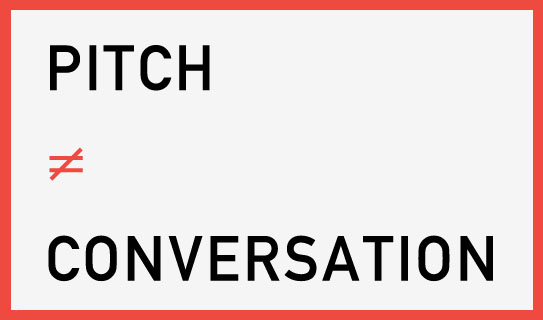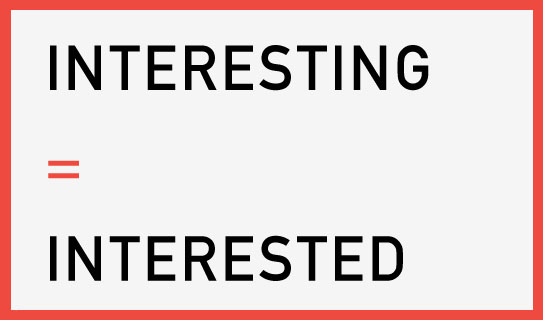It’s not that you don’t need to think about your elevator pitch, but I want you to think differently about it.
Like everything in your business, you should not focus on the what, when and how initially, but think about the why instead. You are seeking a specific outcome. What is that outcome? The answer is simple: You need to get people to understand what you do and you’d like them to care about it; perhaps care enough to start seeing you as a prospect to conduct business with, but at the very least enough to continue the conversation with you rather than dashing away towards a more interesting crowd – the crowd that does not pitch them, but that stimulates meaningful conversations. That is the kind of crowd you need to embody.

Why should a good conversation include a trained, and most often awkward, pitch? Don’t spend time writing your elevator pitch line, instead think about how you could trigger a question in the person that asked about what you do. Don’t make it into a question (because that really is a pitch), but into a statement that triggers a question.
Don’t craft a monologue sentence about your venture’s operations and target audience, instead think about how you would tell a new friend after a long dinner (potentially with a few alcoholic beverages involved) once they ask ‘So what do you do for a living?’ I bet the answer would not be your trained elevator pitch, instead it would be a very casual and passionate way of stating that thing you do to generate income. Simple and honest. A continuation down the dialogue road that you have already situated yourself on. It takes time, energy and sometimes gut to engage in, and continue, a meaningful conversation with a stranger, especially in business settings such as conferences and summits.
Don’t let the elevator pitch kill what you have established.
When I re-positioned my design and brand agency (Geyrhalter & Company) into FINIEN a few years ago, I initially took the same (wrong) path down the elevator pitch road. Here is how that sounded: ‘We are a specialized brand consultancy creating brand strategy, brand names and brand identities for new ventures.’
No! Boooring. Oh boy, there must be many of those consultancies. It sounded great on my plane ride to the conference. Yes, I noted it down and memorized it; it truly was my elevator pitch. Then I tested it in social settings and it was awful. No one, seriously not a single person, cared.
After lunch that day I changed it to: ‘We make sure startups get branding right from the get-go’ – Ha! Interesting. – That’s cool. Tell me more. – Boy, that truly is a real pain point you are solving.
Bingo!

During evening activities that day it changed to a bolder ‘We ensure startups don’t screw up branding’ and it was an instant hit (with follow-ups turning into actual clients).
Simple, personal, interesting. Created to continue a conversation, while moving it towards how I can be of assistance to the person I was not pitching, but simply chatting with. I did not stutter through a memorized statement (that’ll be an elevator pitch), instead I created a very simple conversation starter.
Just like with all things branding, you have to be interesting in order to have someone be interested in you. So skip that pitch and think of the easiest, shortest, most casual and distinct way you can say what you do that only begs for one single outcome: the amicable continuation of your conversation in context of your brand.
CATEGORIES: Blog Startup Advice Your Brand Launch: Brand Strategy
TAGS: Brand Introduction, Brand Positioning, Conferences, Conversations, Elevator Pitch
1 COMMENT
mike802
I’ve found that what can be the most difficult in conversation is when someone only “kinda” understands what you’re trying to do. This can be extremely awkward if you’re caught off guard because you have to choose between the technical explanation, or just kinda gloss over a few things (and kinda talk about the market). People can tell when you haven’t practiced this and honestly, they want a mix of the two.